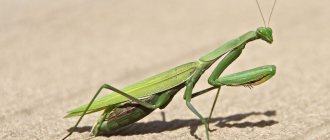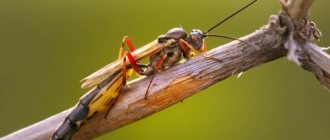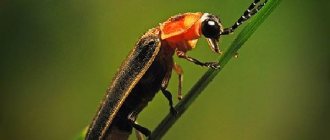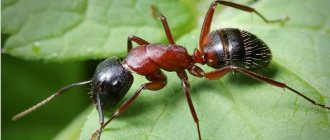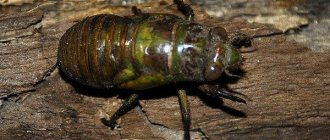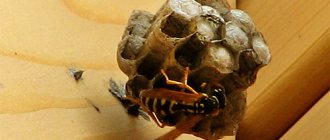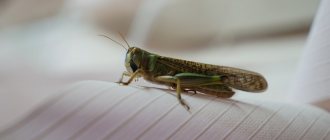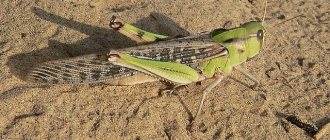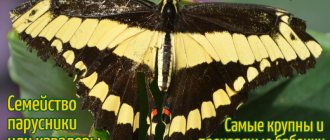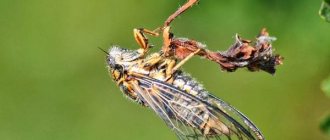- Wild animals
- >>
- Insects
Starting in spring, people try to spend more time in nature, near rivers and reservoirs. Clean air, the sound of water, the sun - all this has a beneficial effect on health, mood and well-being. Another advantage of such a pastime is the opportunity to get to know unique animals better. In particular, this is a water strider , which is also called a water bug. You can learn more about these insects and their lifestyle in this publication.
Origin of the species and description
Photo: Water strider
The water strider is a rather elegant, lightweight insect that lives on the surface of rivers, ponds, and swamps. Very often it is confused with spiders due to its thin and long legs. Sometimes the water bug is mistaken for a cockroach or just a beetle. Water striders are a name that unites a whole family of hemipteran insects. They belong to the suborder of bedbugs. In Latin, the name of such animals sounds like “Gerridae”.
Video: Water strider
Today, it is known that there are more than seven hundred species of water striders that live on the water. This is the most common type of such insects.
The most famous and widespread types include three:
- pond strider. Its distinctive feature is the bright, rich color of its paws;
- large water bugs. They are practically the largest in the family. The body length of such insects can reach seventeen millimeters;
- slow-moving rod-shaped water strider. This animal received its name solely because of its appearance and habits. Outwardly, this bug very much resembles a stick; it lives in Siberia and leads a measured lifestyle.
It is quite easy to recognize representatives of the water strider family. They have average dimensions for insects, large and thin legs. From a distance they can really resemble a spider. Water bugs live on the water surface. Their paws are covered with very hard hairs that have water-repellent properties. This is why a water strider can easily glide through the water and not sink.
All representatives of this family have many common features, one of which is developmental stages. All water striders go through two stages: larvae and adults. In the first stage, water striders live for about a month. At this time, their body is actively developing and changing its color. From a greenish insect with short legs, they gradually turn into a rather large brown bug with long, thin legs, allowing them to move freely along the surface of ponds and reservoirs.
Habitat
Ordinary water striders live in reservoirs, near the shore, so that they can hide from fish in the thickets of plants. Marine individuals inhabit mainly the Pacific and Indian Oceans. Freshwater water striders live on the surface of rivers, lakes with weak currents, as well as in small puddles and streams. They usually choose warm, tropical climates. However, they can survive in harsh, snowy climates.
Appearance and features
Photo: Water strider insect
The water strider is a predatory insect, the dimensions of which depend on the species. Most of the species of these animals have a small body size - only a few millimeters in length. However, many water strider bugs are large in size for an insect. Some species can reach a length of seventeen millimeters. The color of the body also largely depends on the species. It ranges from greenish to dark brown. The lower part of the abdomen and legs of the insect are covered with stiff bristles. It has water-repellent properties. The abdomen is usually brown or gray in color.
Insects have a small head, against which the proboscis and antennae stand out. Antennae are an important part of the water strider's body. They help the animal to detect various odors and serve for the sense of touch. The proboscis takes part in hunting. With its help, the bug injects a special enzyme into its victim. This enzyme dissolves the insides of prey.
Particular attention of people in the appearance of water bugs is always attracted by the legs. They look frighteningly long. Water striders have three pairs of legs, each of which is endowed with its own functional abilities. The first two legs (the shortest) are used during hunting to capture prey, the middle and rear pairs are necessary for support and movement. The bristles located on the legs retain air, which makes the insect “unsinkable”. Some adult species also have wings. With their help, water striders fly over various distances to search for food.
Interesting fact: Lake and river water bugs do not have wings. They simply don't need them. The species of water striders that live in puddles need them most. With the help of their wings, these insects can move, because puddles dry up sooner or later.
Interesting Facts
Water striders are quite unusual creatures, about which there are many interesting facts:
- Water strider bugs are characterized by incomplete transformation, i.e. In appearance, the larva resembles an adult insect, and even during development they do not change radically.
- After wintering, most water striders cannot fly, the reason for this is weakening of the muscles and a small supply of energy, which they require to exist and reproduce in the spring. After all, as you know, their life expectancy is no more than a year.
- Living in a tropical climate, individuals can be seen in the open ocean, hundreds of kilometers from the coast. Recently, it has been scientifically proven that the skin of insects protects them from sea water and ultraviolet radiation.
- Marine inhabitants are divided into coastal (there are most of them) and oceanic. The first ones stay close to the shore, near the thickets, and lay eggs on land, reefs, algae or rocks. Living in the open ocean, they lay their eggs on floating objects. There have been cases of water striders living on a piece of wood, plastic, shells, and even on fruits and bird feathers.
- At the beginning of the 20th century, a 20 liter canister was found in the depths of the Pacific Ocean, completely covered with 70 thousand eggs, i.e. 15 layers. According to estimates, we can say that at least 7 thousand females laid their eggs there (considering that one can lay a maximum of 10 eggs).
- Insects are well oriented on the surface of the water. During the day they move in the direction of the sun, at night - back.
- Parasites can live on the body of water striders. The red, small dots are water mites feeding on their blood.
- Water striders destroy horse flies, both mature individuals and their larvae. The size of an adult horsefly is larger than that of a water strider, so they attack them with several bugs together.
- There are many varieties of water striders (there are about 750 widows), each of which has its own color, structure and lifestyle.
- The insect's legs are very strong, they can support 15 times their own weight.
- Why can water strider insects glide quickly ? By immersing their limbs in the water, water striders create small funnels, thanks to which high speeds are achieved. Pushing off from the walls of the funnel, they make a sharp push forward, thus covering a distance in a second that is a hundred times greater than the length of their body (about 650 km/h).
- Males have well-developed hook-shaped antennae on their heads. This helps them quickly find a female to mate with.
- During mating season, some species of male water striders engage in actual fights.
- Mating for a female is a costly process; at this time she is not very vulnerable and cannot feed normally. Therefore, they store the male's sperm for re-fertilization.
- If a water strider is startled, it always runs north.
Where does the water strider live?
Photo: Pond strider
Water striders are a huge family of about seven hundred species. Therefore, their natural habitat is quite extensive. These insects are found almost everywhere where there are stagnant bodies of water, ponds and even puddles. The only exceptions are very cold regions with harsh winters. The water strider lives in Poland, Sweden, Finland, Russia, Ukraine, Belarus, America and many other countries.
The water strider puts forward a number of requirements for its habitat. They need a temperate climate with warm winters and water - a pond, reservoir or river with a slow flow. Some types of such insects live in puddles. Such water striders have wings so that if the puddle dries out, they can move to another place. The legs of water bugs are long, but very comfortable. This allows the animal to move quickly not only through water, but also on land.
There are species of water bugs that can survive in huge salty bodies of water. For example, these are sea water striders. They differ from their relatives in their tiny dimensions. Another important requirement for a place of residence is the presence of vegetation near a water source. Insects spend the winter in it, hibernating. Sometimes they overwinter in coastal soil. Water striders wake up only with the onset of warm weather.
Now you know where the insect lives. Let's see what water striders eat.
What does a water strider eat?
Photo: Water strider bug
Water striders are excellent hunters. They have acute vision and developed motion receptors. Movement receptors are located on the antennae and limbs, which allows insects to quickly respond to any fluctuations in the water. They react almost instantly to movement in the water, so they easily get food for themselves. These small water bugs are true predators. Their daily diet consists of a huge number of insects, fish, beetles and other small representatives of the animal world.
The front pair of legs takes an active part in catching prey. It is equipped with special hooks. Their water bugs are used to firmly capture prey. The proboscis also plays an important role in the feeding process. Its water strider pierces its prey to suck out nutrients or inject venom. The proboscis is long, but it does not interfere with movement. After eating, the animal tucks it under its chest.
Water striders' favorite treats are:
- flies, horsefly mosquitoes. These insects become food for bedbugs only through their own carelessness. Sometimes they fly too close to the water or accidentally fall into it;
- eggs of small insects, fish roe. The water strider finds such food on swampy shores;
- jellyfish, fish fry, physalia. Such food is the main one in the diet of sea water striders;
- remains of deceased fauna representatives. The water strider is a unique and very useful creature. Representatives of this family eat a large number of remains, cleaning water bodies and banks.
Interesting fact: Water striders often have conflicts and even fights among themselves over food. Insects often steal food from each other using their tenacious front legs.
Danger and benefit for humans
Water bugs in our latitudes do not pose a danger to humans; it is not part of their diet. You can swim in reservoirs inhabited by water striders without fear.
In rare cases, water strider bites are possible, but they are practically painless and have no unpleasant consequences. The only danger is that microorganisms living in the reservoir can penetrate into the wound through the bite. Therefore, the bite site should be treated with a disinfectant composition: brilliant green, chlorhexidine, hydrogen peroxide.
The harm that bedbugs can cause to humans is by eating fry and eggs of valuable fish species. But if the population is small, the damage from such a feast is insignificant.
Read more about the consequences of a waterbug bite in our article - Waterbug bite: how to live after it.
Tropical varieties can cause more serious problems. In addition to the proboscis, they also have a more formidable weapon - a stinger. Their bite is painful, comparable to a wasp sting, and the affected area goes numb. The pain may persist for an hour, after which it passes. There is a danger of an allergic reaction to the secretion, in which case it is necessary to take an antihistamine.
The insects themselves can be beneficial; they regulate the number of horseflies by feeding on eggs laid in the water and attacking adult individuals. Eating dead insects and small animals, they act as orderlies, freeing the reservoir from carrion.
Water strider bugs are a necessary link in the ecological chain, so there is no point in fighting them. They perform an important role as cleaners of water bodies, without causing harm to humans and animals.
Features of character and lifestyle
Photo: Water strider beetle
Water striders are the name of a whole group of small insects, which perfectly conveys their lifestyle. These animals measure the surface of the water with their thin and long legs. It is water that is an integral part of the habitat of such insects. Water striders move through water with ease and do not drown thanks to special bristles on their belly and legs. During the day, they can glide along the water surface for hours, hunting for small insects, fry, flies and even mosquitoes.
In catching prey, animals use everything that nature has given them: acute vision, tenacious paws, a sharp piercing proboscis, and movement receptors. Being an inhabitant of ponds and reservoirs, water bugs are always in sight. However, even here nature helped them, giving them an inconspicuous dark brown color. This color and slender body make them almost invisible to enemies.
Many species of water striders have wings. However, such insects fly extremely rarely. Only some species really need wings to survive. We are talking about those insects that live in small puddles. Any puddle dries out over time, so bedbugs have to look for a new one. They fly to another puddle using their wings. The rest of the time the wings are not used.
In summer, water striders spend most of the day on the water, in winter - in dense thickets or soil. In winter, these animals hibernate. In the warm season, the population of water striders in reservoirs, swamps, rivers and ponds is quite high. While relaxing in nature, probably every person has observed such an insect in close proximity. Bedbugs rarely come to land - only when necessary. This is due to the fact that their paws are poorly adapted for moving on the ground.
External signs of a sea water strider
Marine water striders, in comparison with their freshwater relatives, are small insects. In the largest species, the distance between the ends of the body is only 5.0-6.5 mm.
The body color of sea water striders is dull, gray-brown. But on the water, insects look silvery due to the refraction of light in the numerous hairs covering the body. In recent years, using electronic research methods, it has been found that the outer cover of sea water striders has a complex structure and protects the insect from sea water and ultraviolet rays. The forelimbs of sea water striders have spines; these are grasping legs.
Sea water strider (Halobates).
The long hind legs act as a rudder. They determine the direction of movement of the water striders. The middle legs, covered with bristles, work like an engine. With the help of such versatile limbs, the water strider jumps and swims. The pushing force of the middle legs exceeds the force of the insect's body by more than 10 times. Sea water striders do not have wings.
Social structure and reproduction
Photo: Great water strider
After hibernation, water striders are ready for the breeding process. For them, this process occurs almost immediately with the onset of heat and in the middle of summer. For this reason, in one summer season on reservoirs you can see similar insects of completely different ages. To mate, the male chooses a female and mounts her right in the water. Within a week after mating, the female can lay eggs.
Interesting fact: Water striders are very prolific insects. At one time, a female water bug can lay up to fifty eggs. This allows most species to maintain their high population in nature despite the impact of many negative factors.
The female bug lays eggs on the leaves of various plants that are in the water. The masonry has a rather unusual appearance - it is a long jelly-like cord. All the eggs are neatly laid out in it. Small species of water striders lay eggs without mucus. They stack them in piles or stick them into the leaves of plants.
After a couple of weeks, larvae hatch from the eggs. They develop very quickly and within a month they completely turn into adults. However, young animals are always different from their parents. Young water striders are small in size and have a slightly swollen belly. The lifespan of these animals is short - only one year. However, this does not prevent the family from being one of the most numerous insects in the world and stably maintaining its population.
Natural enemies of water striders
Photo: Water strider
The water strider spends most of its life on the water, rarely appearing on land. That is why all its natural enemies live in ponds and reservoirs. However, there are not many of them. These animals mainly feed on fish and some frogs, tree frogs, and toads. They deftly hunt water bugs. The worst enemy of water striders is the water mite. The larvae of such ticks cause enormous harm to the animal. They bite through the body of the water strider and drink its blood.
The water strider is not an easy prey for predators. These creatures are quite neat and agile. They are good jumpers and can move at high speed. Sensing danger, many water bugs manage to quickly leave the area. They have well-developed motion receptors, so even the slightest splash of water will alert them.
Interesting fact: Few people know about the benefits that water bugs bring to the ecosystem. They are often called orderlies of reservoirs, swamps and rivers. These animals are able to purify water from blood-sucking horse flies. They are “regulators” of the population of these pests.
Humans cannot be called a natural enemy of water striders. People do not deliberately destroy these insects, because they bring great benefits. Water bugs, in addition to being useful, are absolutely safe for people. This insect can bite only in exceptional cases when it is in real danger from a person.
Population and species status
Photo: Water strider on the water
Water striders are one of the largest families of insects. It includes more than seven hundred species of animals, so their overall population is not a cause for concern. Water bugs have been given the conservation status of Least Concern. This status indicates that this insect family is not in danger of extinction in the very near future.
Various factors have a positive effect on the high population of water striders:
- benefits for the ecosystem and humans. People do not try to get rid of water striders, because they know that they are the orderlies of the reservoir. This animal brings great benefits by controlling the population of blood-sucking horse flies;
- high natural fertility. Water striders breed several times a year. At one time, the female lays about fifty eggs, from which larvae then hatch;
- high survival rate. Water bugs have a short lifespan - only one year. However, before this time, adults rarely die. These are neat, fast and dexterous insects. They rarely become victims of natural enemies and practically do not get sick.
Despite the overall rosy picture, some species of the water strider family are included in the Red Books of individual states and cities. For example, we are talking about a sphagnum water strider. This animal is a rare species.
Nutrition
Despite their small size, water striders are real predators on the water . They can feed not only on their relatives, but also on larger individuals inhabiting the reservoir. They see prey from afar, the spherical shape of the organ of vision helps them in this. The forelimbs have hooks with which they capture the prey.
The water strider insect has a sharp proboscis, with which it pierces the body of the victim, sucking nutrients from it. In ordinary life, the proboscis is tucked under the chest, thus not interfering with its ability to move quickly. Sea water striders feed on fish eggs, physalia and jellyfish. In nature, there are also parasitic species of water striders that suck the blood of various insects.
